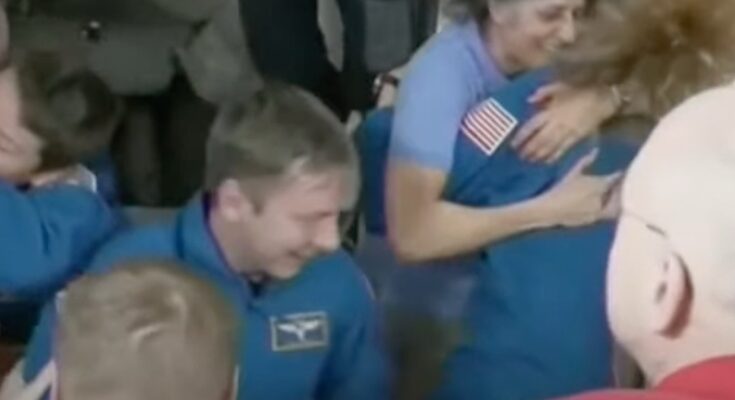SpaceX’s Falcon 9 rocket successfully delivered the Dragon spacecraft to the ISS, marking a critical step in bringing Williams and Wilmore home. The two astronauts had originally arrived at the ISS last June for a short mission, but their return was delayed when their intended spacecraft was deemed unfit for travel, forcing them to remain on the station far longer than anticipated.
To facilitate their return, SpaceX launched its Dragon spacecraft carrying Crew-10 from Launch Complex 39A at NASA’s Kennedy Space Center in Florida on Friday, March 14. NASA announced on Sunday, March 16, that the Dragon spacecraft had successfully docked with the ISS at 12:04 a.m. EDT while orbiting approximately 260 miles above the Atlantic Ocean.
Shortly after docking, at 1:35 a.m. EDT, the hatches between the ISS and the Dragon spacecraft were opened. The newly arrived Crew-10 members—NASA astronauts Anne McClain and Nichole Ayers, JAXA astronaut Takuya Onishi, and Roscosmos cosmonaut Kirill Peskov—were warmly greeted by the Expedition 72 crew. This included NASA astronauts Nick Hague, Don Petitt, Suni Williams, and Butch Wilmore, along with Roscosmos cosmonauts Aleksandr Gorbunov, Alexey Ovchinin, and Ivan Vagner.
Watch the @SpaceX #Crew10 members enter the space station and join the Exp 72 crew for a long-duration space research mission. https://t.co/WHpxBz51Ts https://t.co/WHpxBz51Ts
— International Space Station (@Space_Station) March 16, 2025
The event was broadcast live on social media platforms by both NASA and SpaceX, capturing moments of camaraderie as the crew members embraced each other in zero gravity. Reflecting on the journey, McClain shared her excitement: “Crew-10 has had an incredible journey to get here. Seeing the space station for the first time out of our window was an indescribable experience.” Williams added her thoughts, saying to Mission Control: “It’s been a fantastic day. It’s wonderful to see our friends arrive.”
While one of Crew-10’s primary objectives is ensuring Williams and Wilmore’s safe return to Earth, they will also conduct scientific research aboard the ISS aimed at advancing human exploration beyond low-Earth orbit and benefiting life on Earth. A two-day handover period is planned before Williams and Wilmore depart for Earth; however, this timeline may be extended if conditions for re-entry are not optimal.

Dana Weigel, manager of NASA’s ISS program, emphasized that safety remains paramount: “Weather conditions must be favorable for re-entry. If they aren’t ideal, we’ll take our time to ensure everything is safe,” she told reporters in comments shared by the BBC.



